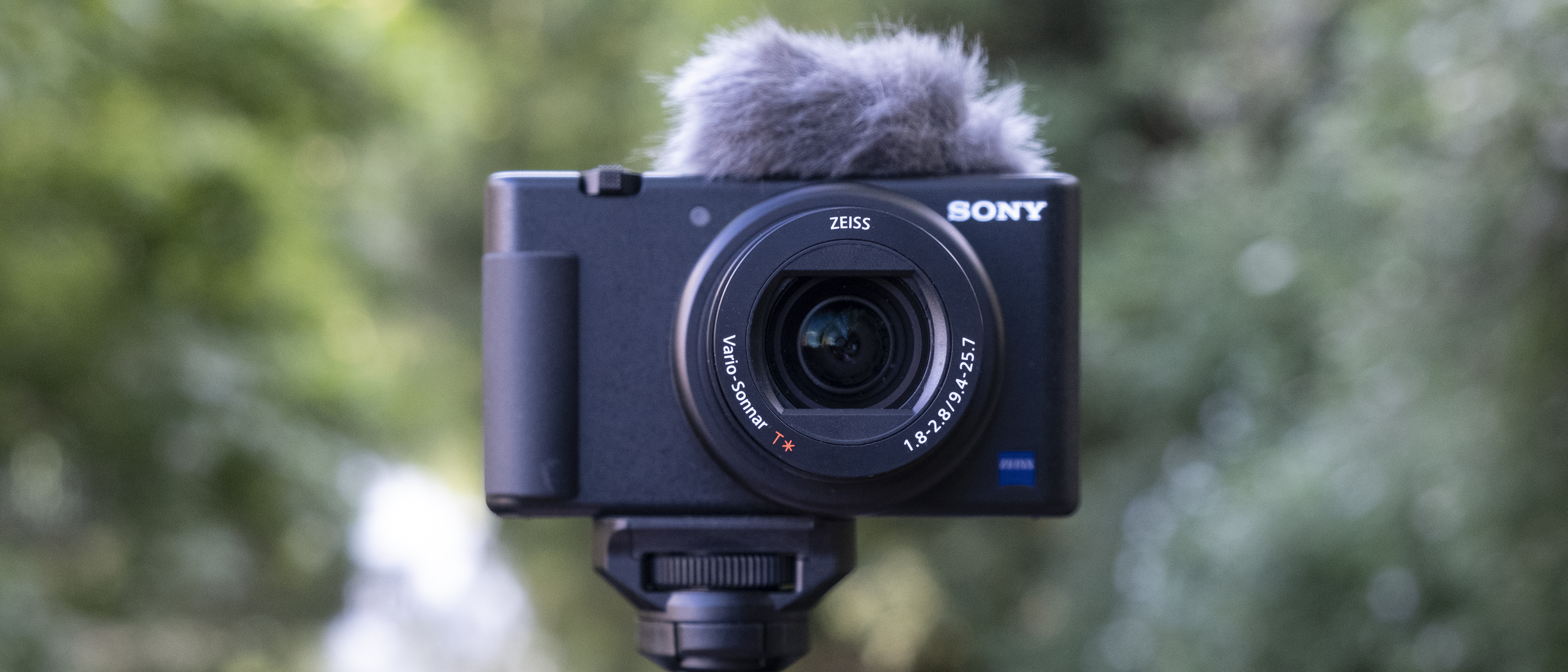TechRadar Verdict
The Sony ZV-1 is the best compact vlogging camera you can buy. Its mix of a bright lens, superb autofocus and design tweaks like the side-flipping screen make it a powerful pocket video option with few peers. Those seeking super-smooth walking footage might find its image stabilization a slight let-down, and it has a few familiar usability quirks, but the ZV-1 remains the best video all-rounder in its weight class.
Pros
- +
Class-leading autofocus
- +
Bright lens for lovely video bokeh
- +
Hotshoe and 3.5mm mic port
- +
Side-flipping screen ideal for video
- +
Fits in your pocket
Cons
- -
Average video stabilization
- -
Touchscreen still very limited
- -
Micro USB rather than USB-C
Why you can trust TechRadar
Editor's Note
• Original review date: May 2020
• Launch price: $749 / £699 / AU$1,299
• Official price now: $649.99 / £649 / AU$1,079
Update: March 2024. That the Sony ZV-1 is four years old but remains in a several TechRadar buying guides is testament to its filmmaking chops, especially for those starting out in filmmaking and on a limited budget. Its 4K video and excellent autofocus performance with clever subject detection modes make it one of the best vlogging cameras even in 2024. An updated Sony ZV-1 II was introduced more recently and is also an excellent video camera. However, we have kept the older ZV-1 in key buying guides because the second-gen model simply doesn't do enough to merit an upgrade or to spend the extra money on, and so for now the ZV-1 remains an excellent value video-focused compact camera.

Sony ZV-1: two-minute review
The Sony ZV-1 is the most powerful pocket vlogging camera you can buy right now. It takes the best video features of the Sony RX100 series, including its class-leading autofocus system, and combines them with design tweaks that make it ideal for shooting YouTube videos at home or on the move.
Its main strength is the combination of a bright 24-70mm f/1.8-2.8 lens with Sony's Real-time tracking and Real-time Eye AF systems. Together with the ZV-1's 1-inch sensor, which is larger than those in today's smartphones, these make it easy to shoot high-quality vlogs with pleasing background blur and consistent focus.
The inclusion of a 3.5mm microphone port means it's relatively easy to add good-quality audio to match your videos, while a hotshoe lets you mount accessories like a shotgun mic or LED light without needing a bracket to support them.
This is particularly useful because, while the ZV-1's three-capsule internal microphone is an improvement over the built-in mics found in the RX100 series and other compact cameras, it still falls short of offering audio that matches the quality of its video. You do at least get a windshield bundled with the camera, which is essential for when you're shooting in breezy conditions.
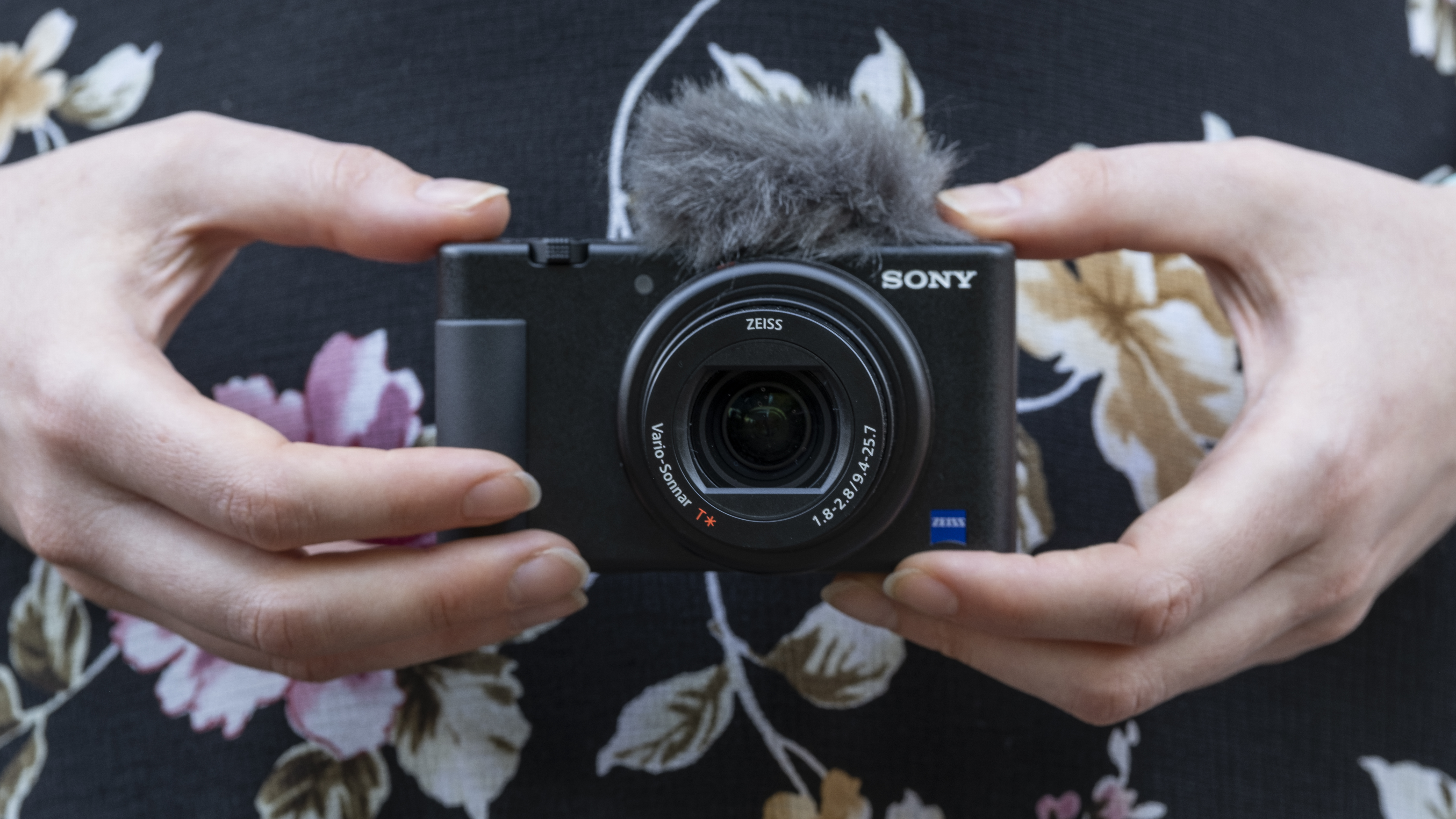
The ZV-1 isn't perfect, and you might want to consider other options, depending on your needs. Its SteadyShot stabilization is passable for walking videos, but falls short of the smoothness offered by the DJI Osmo Pocket, GoPro Hero 8 Black, or larger cameras like the Olympus E-M5 Mark III. Its strongest stabilization also adds a slight crop that can make the resulting focal length slightly tight for handheld shots, though we didn't find this to be a major issue.
Despite the inclusion of renamed shortcut buttons for beginners, the ZV-1 also isn't the most user-friendly camera for those upgrading from smartphones. Aside from letting you tap to focus, its touchscreen doesn't work with menus like the handy 'Fn' grid, and it settings remain labyrinthine; a beginner-friendly section for video newcomers would have been nice.

The flipside to this complexity is that the ZV-1 is absolutely packed with features, including a built-in ND filter, autofocus sensitivity options, and profiles like S-Log2 for those who like to color-grade their videos; Sony is also promising live-streaming software for Windows users from July 2020. All this makes it incredibly powerful for a compact camera, and ensures that it'll grow with you as your skills improve.
The ZV-1's size means there are naturally other compromises, including the lack of a headphone jack and average battery life, while the absence of an electronic viewfinder means those looking for a stills camera should also look elsewhere. But the ZV-1 packs in more power and video features than any other compact camera, making it an ideal take-anywhere camera for shooting content for your YouTube or other social media channel - indeed we think it's one of the best YouTube cameras.
Sony ZV-1: price and release date
- The Sony ZV-1 launched on May 26, 2020
- It costs $749 / £699 / AU$1,299
- You can also buy a Bluetooth Grip controller for $138 / £170 / AU$249
You can order the Sony ZV-1 right now, as pre-orders opened on its release date of May 26, 2020. Sony says shipping is expected to start "in early June" in the US and UK, and by "mid-June" in Australia.
The compact vlogging camera costs $749 / £699 / AU$1,299 which puts it roughly in between the Sony RX100 Mark IV and RX100 Mark V price-wise.
Unlike all of Sony's RX100 series camera, the ZV-1 lacks an electronic viewfinder, which helps to keep its price down. It does, though, bring newer features that aren't available on the latter two cameras, including Real-time Eye AF autofocus.
That price tag puts the Sony ZV-1 at a similar price point to its main rival, the Canon G7X Mark III. That camera launched in August 2019 for $750 / £700 / AU$1,100, although it can currently be found for slightly less than that.
You can also now buy a shooting grip with an integrated wireless remote for the Sony ZV-1, the Sony GP-VPT2BT. This is available now, and costs $138 / £170 / AU$240.
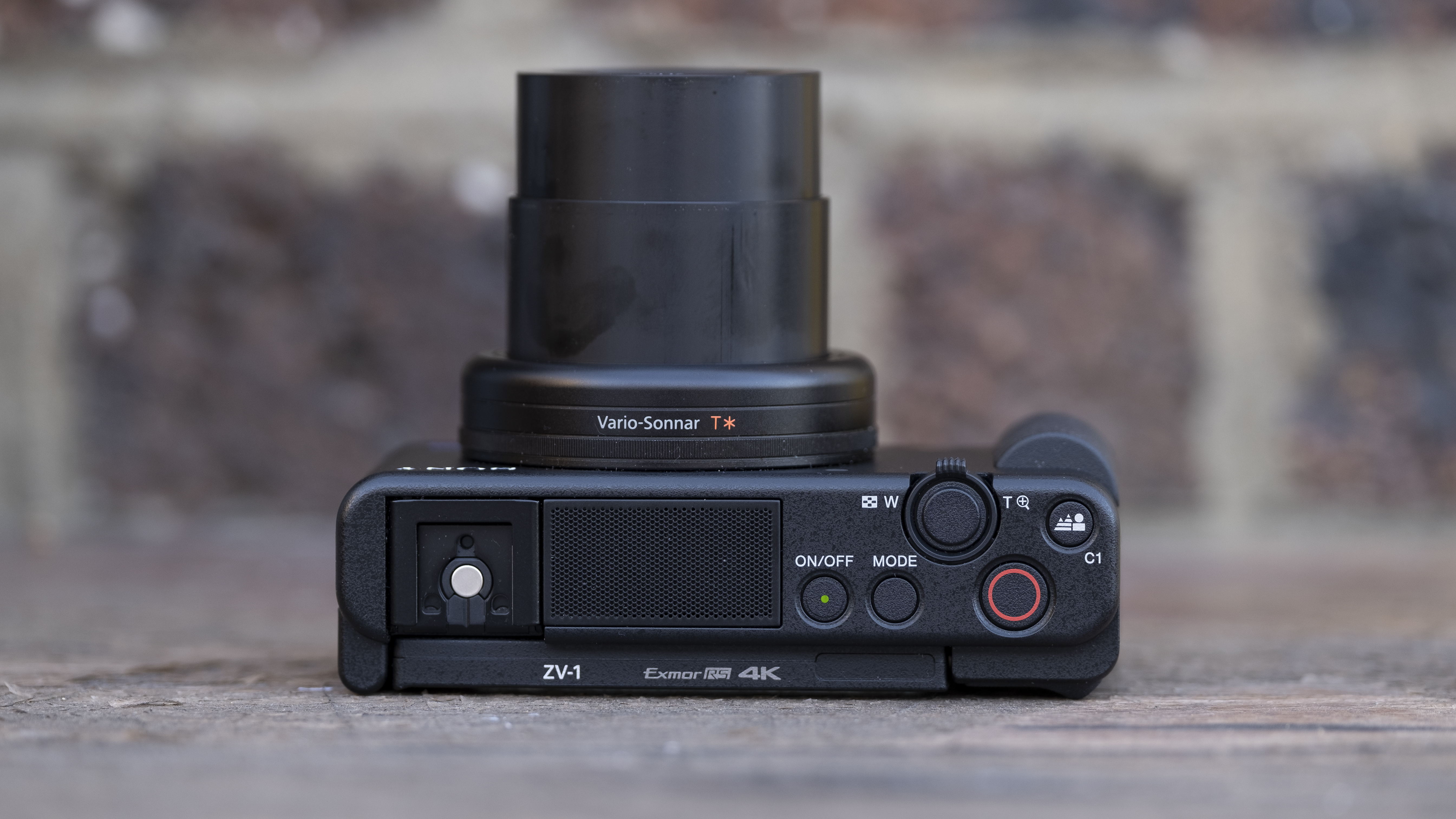
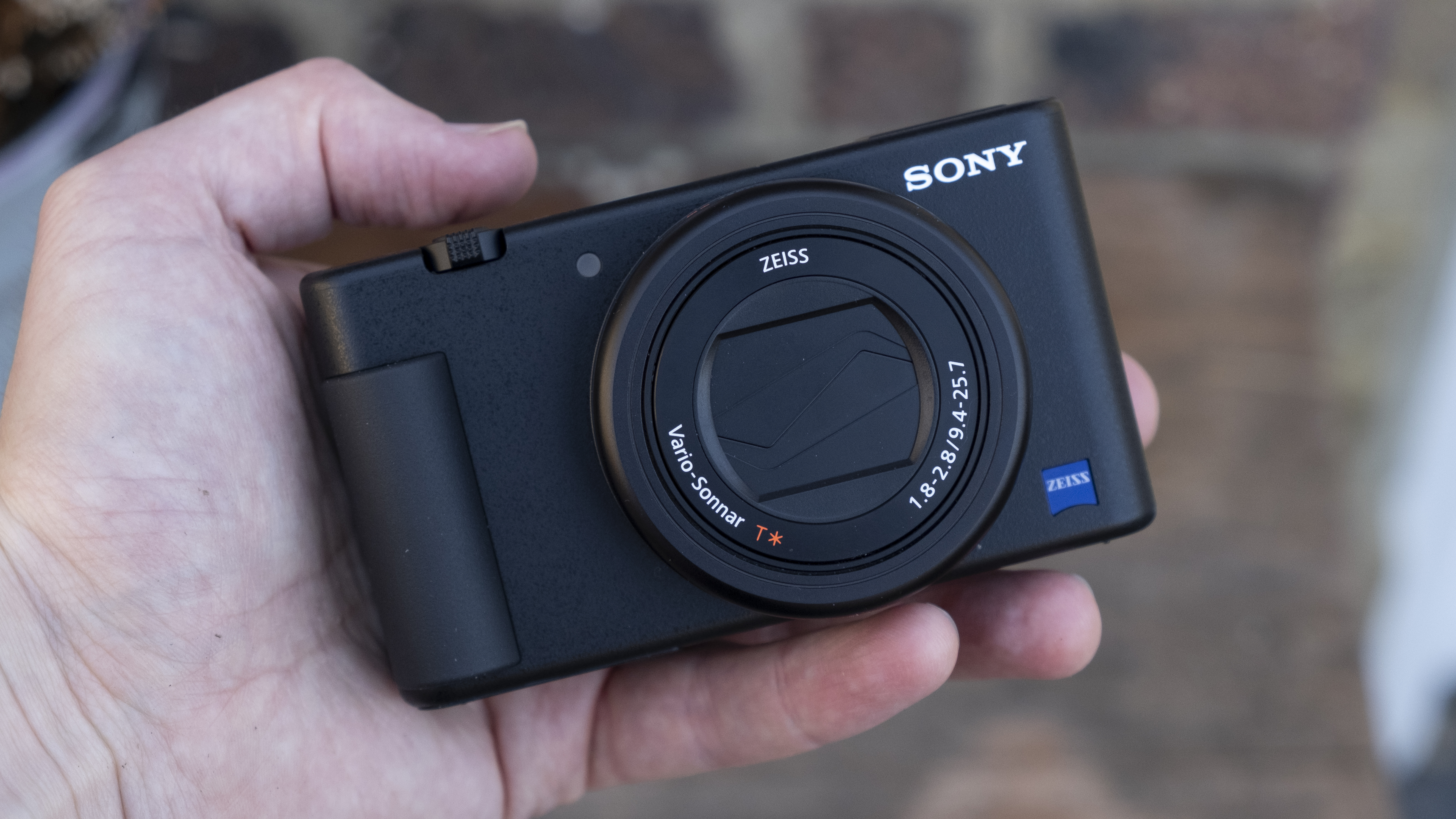

Sony ZV-1: design
- New side-flipping LCD screen is ideal for video
- Hotshoe and 3.5mm port make it easy to add external microphone
- Lacks the RX100 series' viewfinder and lens control ring
The Sony ZV-1 is like a Sony RX100 Mark V that's been redesigned for YouTubers. The end result isn't perfect, but it does fix most of the criticisms we had of the Mark V when it came to video shooting. Along with the Canon G7X Mark III, it's one of the few compact cameras that's been designed primarily for video.
First, the good bits. The best new feature is a side-hinged articulating touchscreen. This kind of screen is better than a tilting one for shooting video, because it leaves the top and bottom of the camera free for attaching accessories. Crucially, it also flips around 180 degrees to face forwards, allowing those operating one-person YouTube channels to frame their shots without needing someone behind the camera.
Sadly, Sony's touchscreen functionality is still pretty limited. You can tap the screen to pull focus in video, for example, but not navigate menus or even zoom in on photos. That's a shame for a camera that's been designed primarily for people who are upgrading from smartphones; still, the benefit of that side-hinged screen is that there's room on top of the camera for a hotshoe.

This hotshoe replaces the electronic viewfinder you'll find on Sony's RX100 series. Losing a built-in EVF would be a big deal for a stills-focused camera, and it's something to bear in mind if you need an all-rounder for both photos and video. But it makes sense for a vlogging camera like the ZV-1, because its target audience will mostly be using the screen as a viewfinder – and it also helps to reduce the ZV-1's price tag, if not by quite as much as we'd hoped.
The option to plug accessories like LED lights or external microphones into that hotshoe is a real bonus. If you purchased the Sony RX100 VII you had to buy an external bracket to mount them, but there are no such worries with the ZV-1, and this brings us to another of the ZV-1's vlogging bonuses: a 3.5mm mic input.
There isn't much point shooting great-looking video if you don't have the audio to match, so a 3.5mm port is essential for vlogging cameras. The Sony ZV-1 does actually have an improved built-in microphone on its top plate – this is a three-directional capsule mic with left, center and right channels.
Sony also bundles a 'dead cat' windshield with the ZV-1, which plugs into the hotshoe to help counter wind noise when you're shooting outdoors. But as we'll see later, an external microphone is still significantly better than any built-in equivalent, making that 3.5mm port a crucial inclusion.
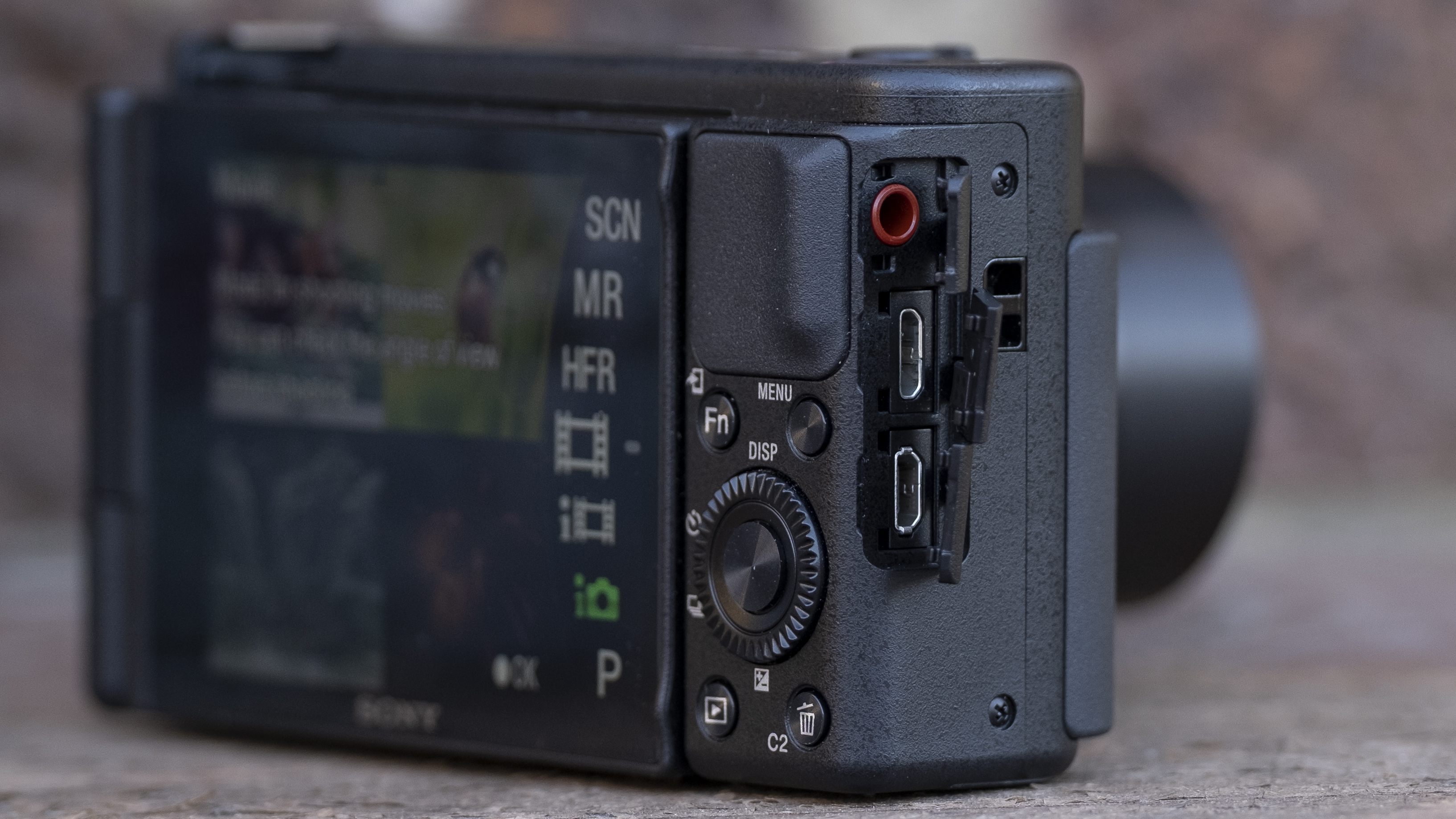
Slightly less welcome is the inclusion of a microUSB port below the mic port. While it's far from a deal-breaker, we expect all new cameras to offer USB-C ports these days for speedy charging and all-round convenience. The Fujifilm X-T4, for example, comes with a USB-C headphone adaptor that lets you monitor the sound on your recordings, which is something you can't do on the ZV-1. You can at least charge the Sony ZV-1 while using the camera, though, so it's not completely stuck in the charging dark ages.
The Sony ZV-1 brings two other handy design tweaks that you won't find on the RX100 VII or any of its predecessors. One is a small hand grip. While this doesn't revolutionize the ZV-1's handling, it's another feature that many RX100-series owners have added to their cameras with third-party accessories. And finally, for the first time on a Sony camera, the video recording button is now as big as the stills shutter button.
These might not sound important, but they're pretty significant. Unlike the RX100 series, they mark the ZV-1 out as a video-first camera that can also do stills. And, while you miss out on features like an EVF and lens control ring, the inclusion of a side-flipping screen, hotshoe and mic port make the ZV-1 the best pocketable tool around for vloggers and YouTubers.
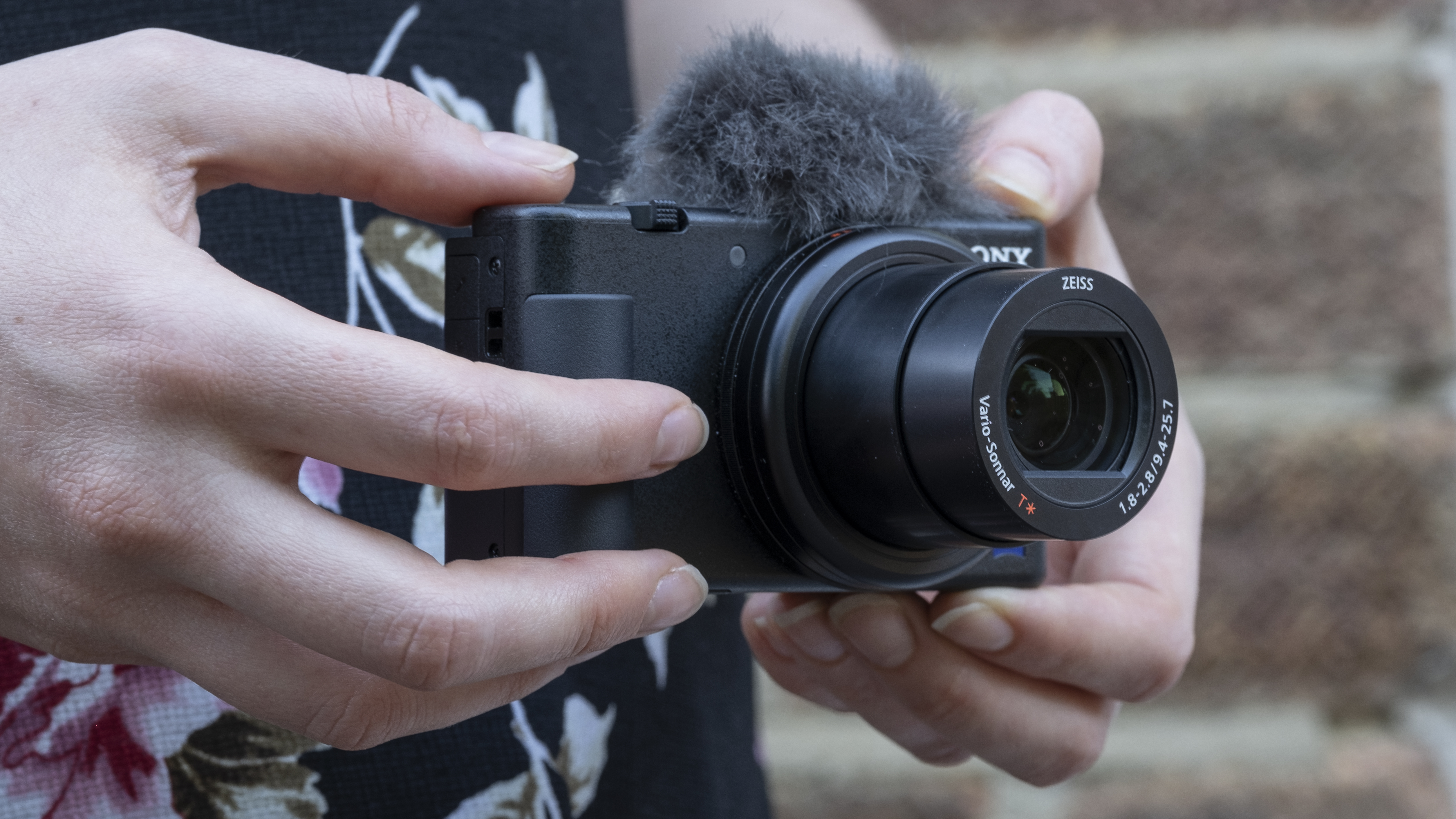
Sony ZV-1: autofocus and lens
- Real-time Eye AF produces class-leading vlogging autofocus
- Bright 24-70mm f/1.8-2.8 lens creates pleasing background blur
- Lacks Animal Eye AF, but includes Real-time Tracking for moving subjects
The Sony ZV-1 does what many vloggers have been crying out for – it combines the lens of the Sony RX100 Mark V (or at least a mildly tweaked version of it) with Sony's latest Bionz X processor and autofocus skills.
Why include the 24-70mm lens from the Mark V, rather than the 24-200mm lens seen on the last two Sony RX100 cameras? Because the former is simply more suited to vlogging, thanks to its brighter f/1.8-2.8 aperture. This combines nicely with the camera's 1-inch sensor to give your videos some pleasing background blur, while still photos also benefit from the knock-on effect of the ability to shoot at lower ISOs in equivalent scenes (albeit at the expense of that longer 200mm reach).
But the ZV-1's real ace is pairing this bright lens with some of Sony's latest Real-time autofocus tech. This is possible thanks to the combination of the Bionz X processor (also seen in the full-frame Sony Alpha A9 II) and that 1-inch, 20.1MP stacked CMOS sensor, which has 315 phase-detect autofocus points covering 65% of the frame.
What does all this mean in reality? For a start, the ZV-1's hybrid autofocus, so-called because it combines phase detect with contrast-detect AF systems, means it's faster and more confident for video than the contrast-only systems seen in rivals like the Canon PowerShot G7 X Mark III.
On top of that, you get Sony's latest Real-time Tracking and Real-time Eye AF (for people), which are easily the best you'll find in a compact camera for capturing people and moving subjects. Keeping moving subjects in focus is invariably just a case of tapping them on the ZV-1's screen; if you have Face and Eye AF tracking enabled, it will also seamlessly switch to the latter when it detects a person's face.
This is particularly important for a vlogging camera with a bright lens, because it can be very easy to lose focus on a face when shooting at apertures like f/1.8. But aside from when we got too close to the lens, we found the ZV-1 did an excellent job at tracking our eyes across most of the frame.
Sony ZV-1: features
- Includes two new shortcut buttons for vlogging beginners
- Picture profiles offer editing flexibility for more advanced vloggers
- Slow-motion modes are fun and useful
So what other video-friendly treats does the Sony ZV-1 pack beyond excellent autofocus? A huge amount, which isn't always a good thing for usability.
Sony's camera menus are renowned for being about as user-friendly as a book of hieroglyphics, and it's done a couple of things in an effort to make the ZV-1 a bit more intuitive for beginners.
These include two new default settings for the camera's two custom buttons. The first of these, called the 'Bokeh switch', will instantly switch to a wide-open aperture to give your footage a defocused background. Unlike smartphone 'portrait' modes, there's no computational trickery going on here – it's purely a shortcut based on traditional optics.
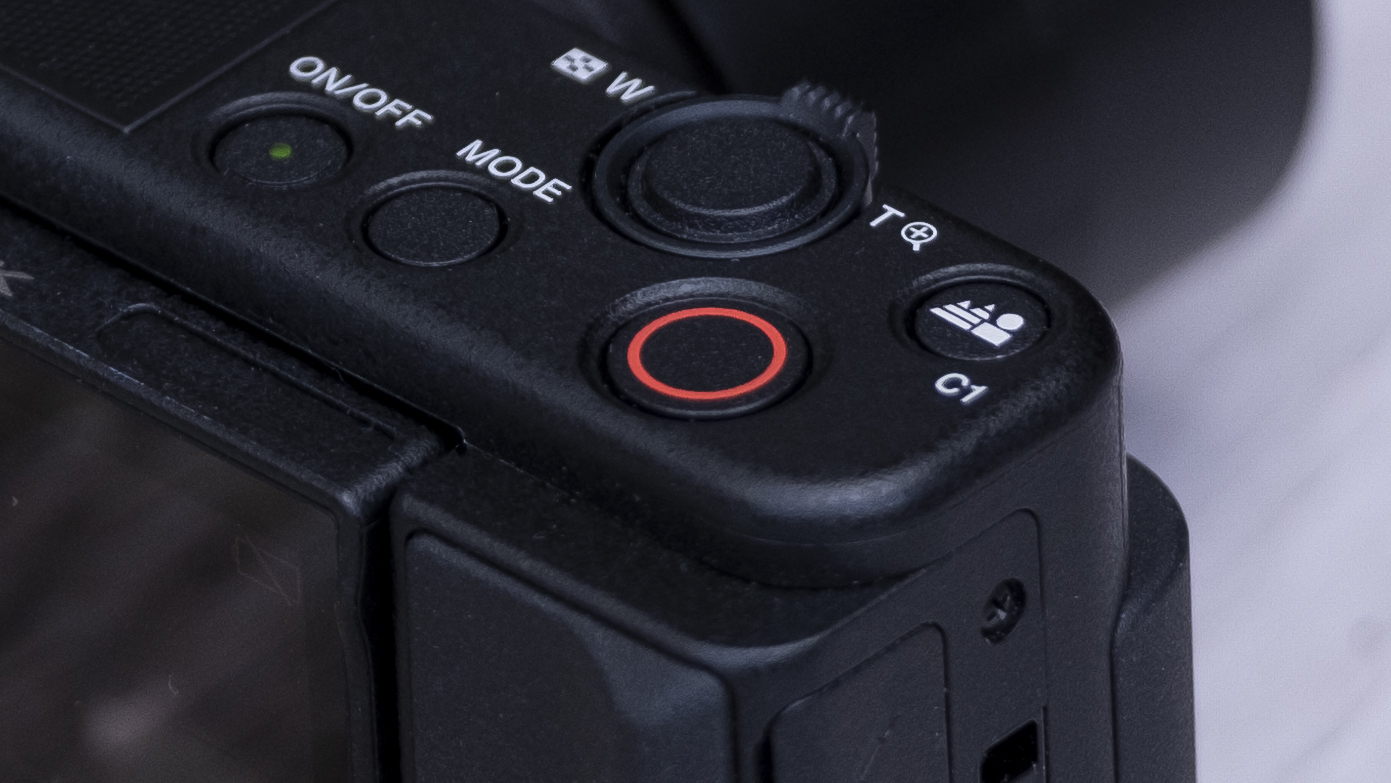
The second and perhaps more useful custom button is called 'Product showcase', which is designed specifically for YouTubers who specialize in reviews.
Again, this doesn't do anything beyond what you can do in the settings, but pressing this instantly turns off both SteadyShot stabilization (making a tripod a must for this mode) and Face and Eye priority AF. This means that when you hold a product up to the camera, it'll lock focus onto that, rather than prioritizing your face. Because of the speed of the ZV-1's autofocus, this works pretty well.
Still, these feel like hastily bolted-on fixes, and the ZV-1 otherwise feels very much like an RX100 series compact camera, which is a shame, and when you compare the interface to slick touchscreen apps like Filmic Pro, it can feel like a relic from the past. Prepare to do a lot of flicking through ZV-1's menus and setting up custom menus.
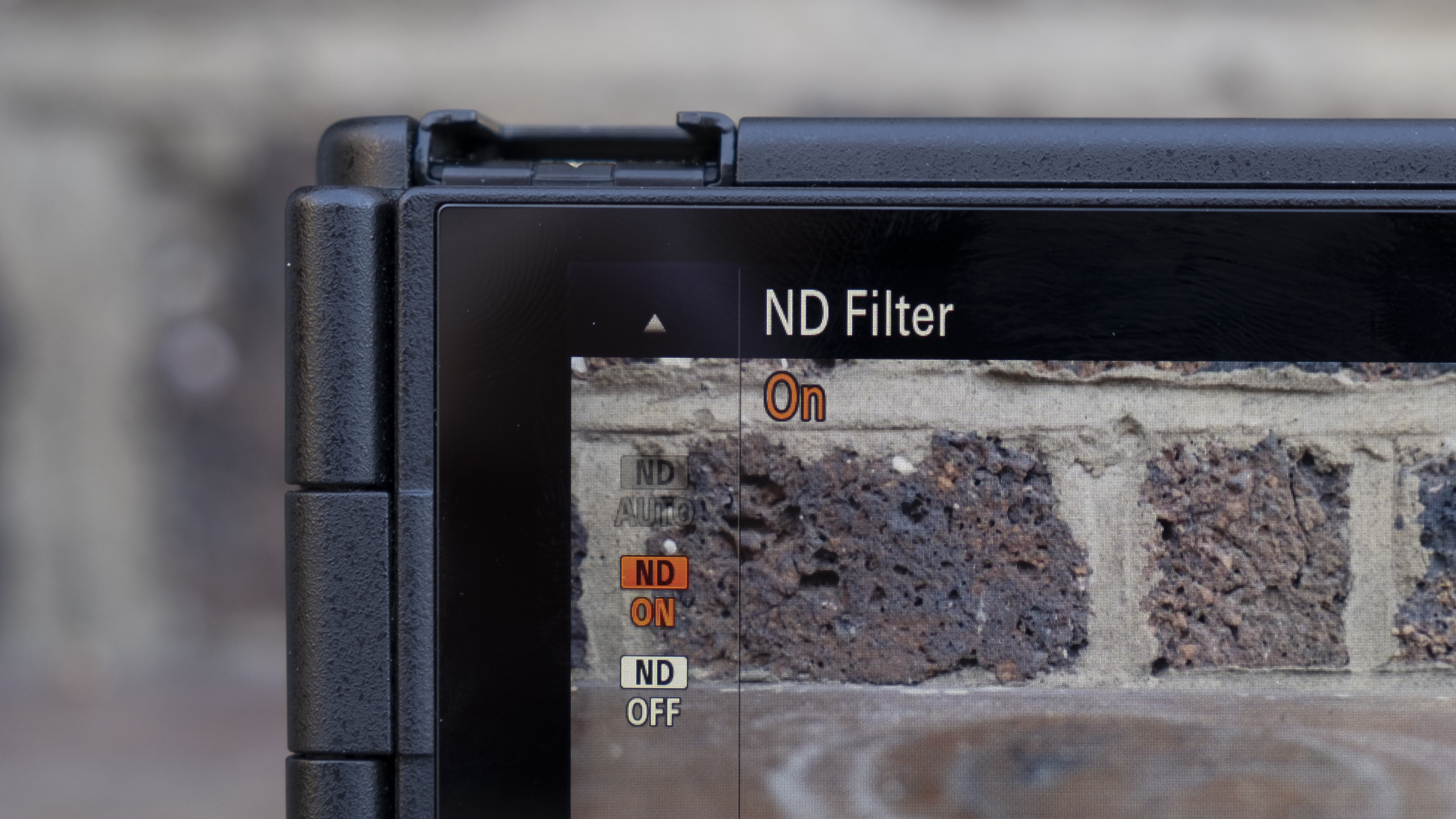
To be fair, this complication is partly because the ZV-1 is so stuffed with features, with many of them aimed at advanced video shooters. This in turn gives it an incredible amount of depth for a compact camera.
For example, there's the welcome return of the built-in ND filter. This was jettisoned on the last two RX100 cameras, but is nigh-on essential for getting smooth movement in videos on bright days, as it allows you to shoot with slower shutter speeds without having to stop the lens down.
Dig a bit deeper into the menus and you'll find compositional aides like focus peaking and zebra patterns, plus all of Sony's picture profiles including S-Log2, S-Log3 and Hybrid Log Gamma (HLG), for those who like to color-grade their footage to extract the most amount of dynamic range.
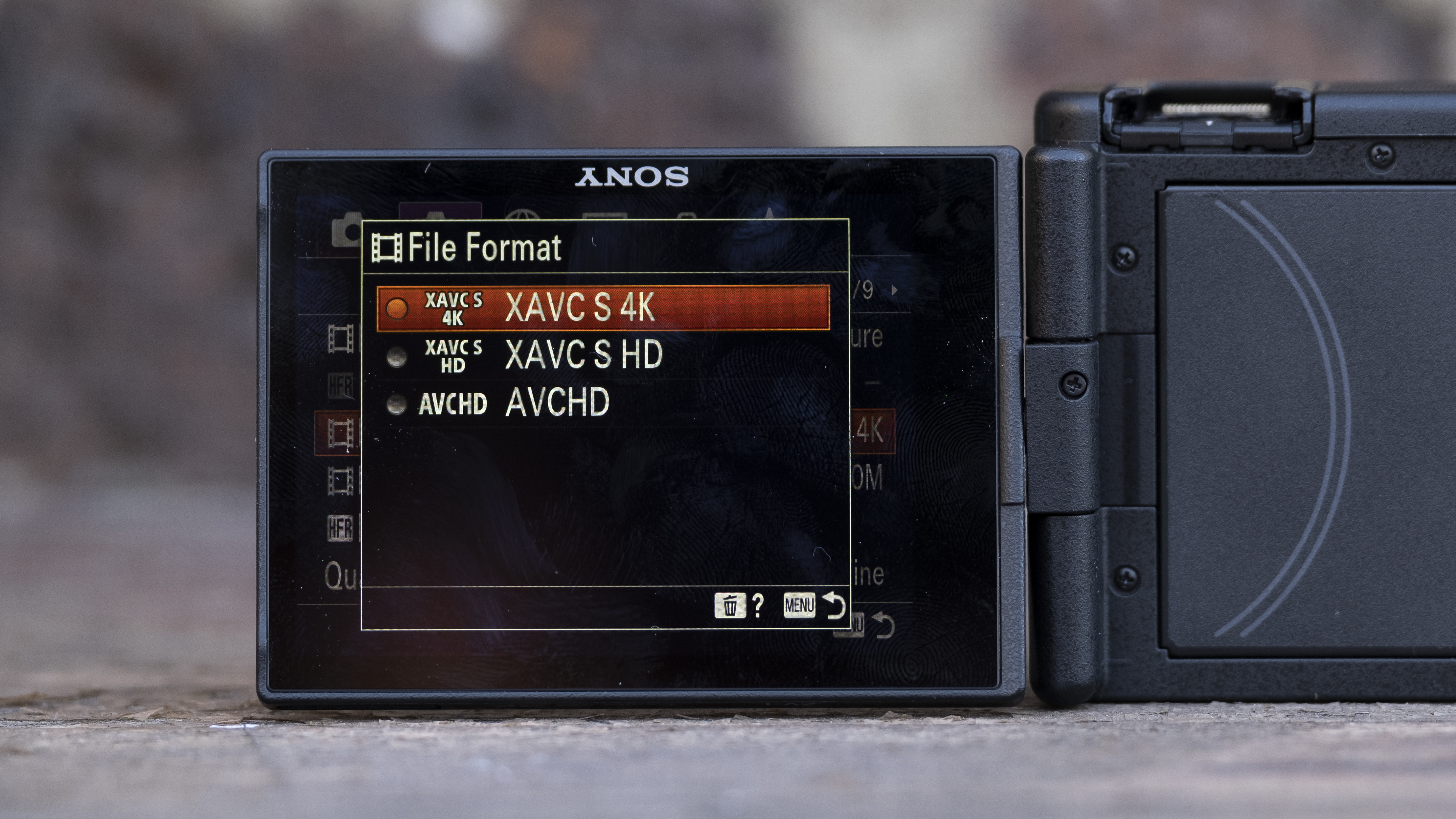
But what about more commonly tweaked settings, like resolution and frame-rate options? Like the RX100 Mark VII, the ZV-1 can shoot 4K at a maximum 30p. It's a shame it doesn't have a 4K/60p mode, but its 4K footage is at least achieved by oversampling rather than pixel binning; the former is a superior method of grabbing a 4K image from the 20.1MP sensor, helping to avoid pixelated, jagged edges.
Of course, there are faster frame rates available if you're okay with shooting in 1080p, along with Sony's impressive super slow-mo options, which go all the way up to an incredible 960fps.
Naturally, there's significant quality loss here, which we'll go into along with the ZV-1's stabilization and battery life in the performance section.
Sony ZV-1: performance
- Video stabilization is improved, but falls short of the best
- Built-in microphone is decent, but external mics recommended
- Short battery life means packing spares for long shoots
Alongside great autofocus, a forward-facing screen and good audio options, vlogging cameras also need impressive image stabilization to help keep handheld footage steady. Of those four features, this is the Sony ZV-1's weakest area.
Not that its SteadyShot system is bad, by any means. Its most powerful 'Active' stabilization mode combines optical and electronic stabilization, and is available in 4K shooting too. If you're doing any walkaround vlogging, this is an essential mode, as you can see in our test clips below.
The trouble with 'Active' stabilization is that it applies a slight crop to your footage in order to counteract the bounce in your walking movements. It's not too severe, but because the ZV-1's widest focal length is already a slightly tight 24mm, it does mean you end up with very little room around your face when holding the camera at arm's length.
We still think this crop is fine for handheld vlogging, particularly as it highlights how good Sony's Eye AF focusing is – but it might be something to try out first if you're planning to mostly film walking shots while talking to the camera.
If stabilization is important to you, it might also be worth considering alternatives or accessories. As you can see in our comparison video above, both the GoPro Hero 8 Black and DJI Osmo Mobile 3 (with a smartphone) offer superior stabilization to the Sony ZV-1, at the expense of image quality. The best of all worlds could well be combining the Sony ZV-1 with a gimbal like the Zhiyan Crane M2 – we'll update this review when we've had a chance to try out that combination.
The ZV-1's built-in, three-capsule microphone captures decent audio for a compact camera. The included 'dead cat' windshield is also essential if you're venturing out into breezy conditions, as our demo video above shows.
But there is inevitably still a little noise interference from camera's focus motors, and if you want to capture audio that matches the quality of your videos then you'll want to pair the ZV-1 with an external microphone.
Fortunately, that's possible thanks to the 3.5mm microphone port on the side, and there are plenty of mic options around, from Sony's own ECM-XYST1M Stereo Microphone to something more discrete like the Rode Wireless Go. If you're just starting out, then a cheap lavalier (or 'lav' lapel mic) is an affordable way to boost the ZV-1's audio too, particularly if you'll mainly be talking to camera.
On a slightly more fun note, the Sony ZV-1 does also offer the same slow-motion modes as the RX100 series. These include 250, 500 and 1000fps options, although the latter two bring a significant hit to resolution and quality. We'd mostly steer clear of those, but the 250fps mode is decent, and combines nicely with the ZV-1's shallow depth of field. The only shame is that you can only shoot four-second clips, and setting up the slow-mo modes is still a clunky process.
With so many processor-intensive recording modes, how does the Sony ZV-1's battery life hold up? As you'd expect, not brilliantly – it only has room for the same NP-BX1 battery as the RX100 VII, which means around 260 shots or 45 minutes of video.
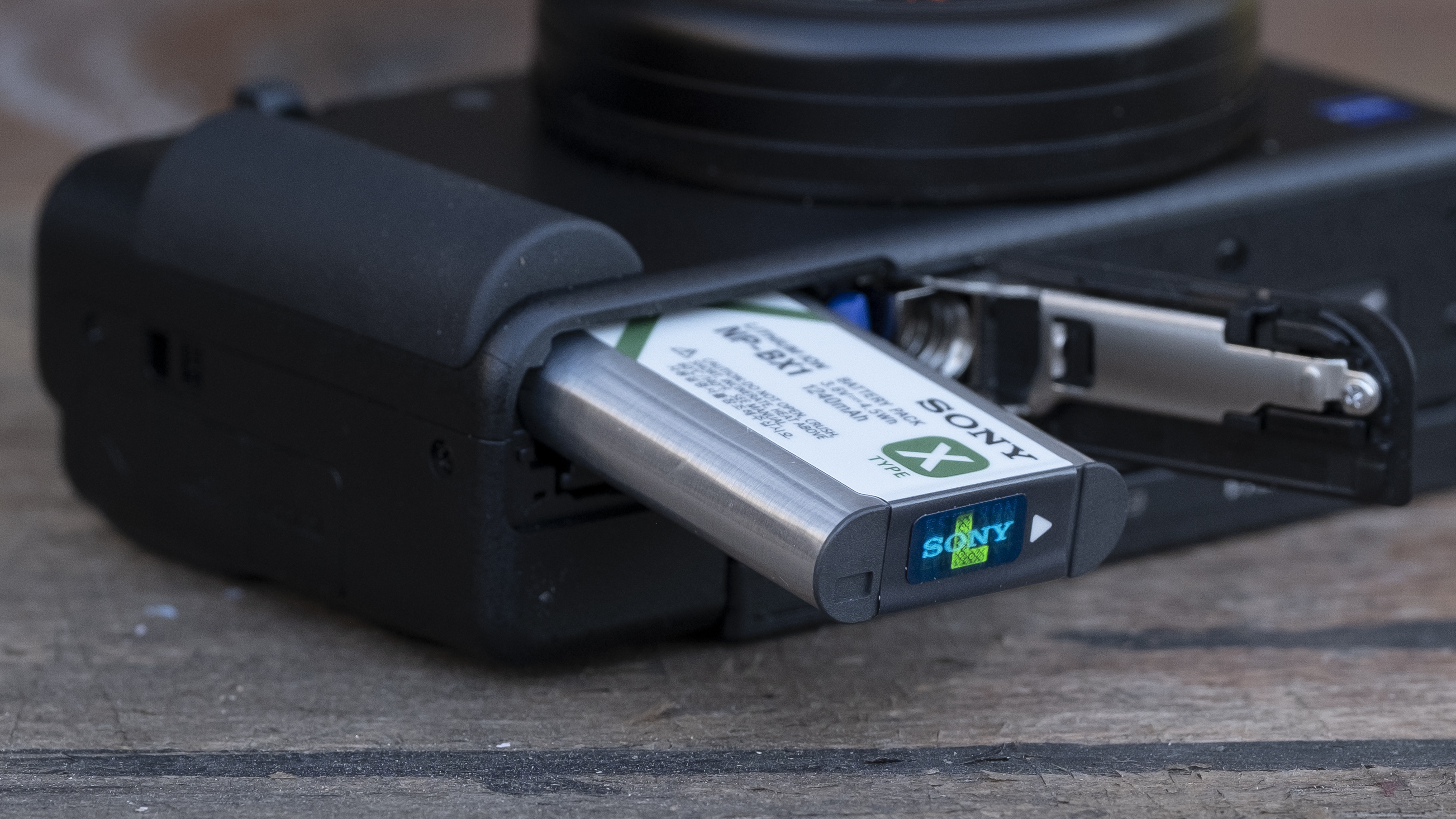
This means carrying a spare battery or two is advised, although it is possible to use the camera while it's plugged into a battery pack or wall charger. Another bonus is that it's now possible to bypass the default five-minute recording limit when shooting 4K video – set the 'auto power off temp' to 'high' and it'll keep going until either the battery runs out or your memory card fills up.
We managed to record a continuous 4K video clip for 44 minutes in this mode – and while the ZV-1 was certainly toasty by the end, it wasn't impossible to hold, and Sony says using this mode won't damage the camera in any way.
Sony ZV-1: video and image quality
- Shoots crisp, detailed 4K/30p video
- Default skin smoothing is a little overdone, but can be turned off
- Strong stills performance, but lacks a viewfinder
Like the most recent Sony RX100 cameras, the ZV-1 oversamples its video footage before downsampling it to 4K. This process produces sharper results than alternative techniques like pixel binning, and you can see this in its 4K footage – it's very crisp and detailed, and has no crop unless you're shooting with 'Active' stabilization.
It's a slight shame the ZV-1 doesn't have a 4K/60p option, as this would let you slow down 4K clips without any loss in quality. But it's not a major miss, and the 4K/30p mode impresses with its lack of rolling shutter, which is a common side-effect of CMOS sensors that sometimes results in skewed lines during fast panning movements.
The built-in ND filter also helps to keep movement nice and smooth in bright conditions, although the ZV-1 naturally struggles a bit more in lower light due to its 1-inch sensor. If you're faced with a really high-contrast scene, then picture profiles like S-Log2 will help you to extract extra detail, although you'll need to be comfortable with color grading before attempting that.
One area of image quality that Sony has gone big on for the ZV-1 is the color and exposure of human faces. Based on feedback from around the world, Sony says it's created an "optimized color algorithm" that makes sure skin tones are natural, wherever you're from. The ZV-1 also apparently uses its face recognition tech to get exposure readings, to make sure the vlogger's face is bright and well exposed in all conditions.
This certainly worked pretty well in our experience, although we haven't yet been able to try it on a range of faces. One thing we did tweak, though, was the ZV-1's skin smoothing effect – this is pretty strong by default, so we'd err on the side of switching it to 'low', or off entirely. Despite Sony's attempts to make it more natural than many equivalent smartphone modes, the stronger skin smoothing variants still look a bit too artificial for our tastes.

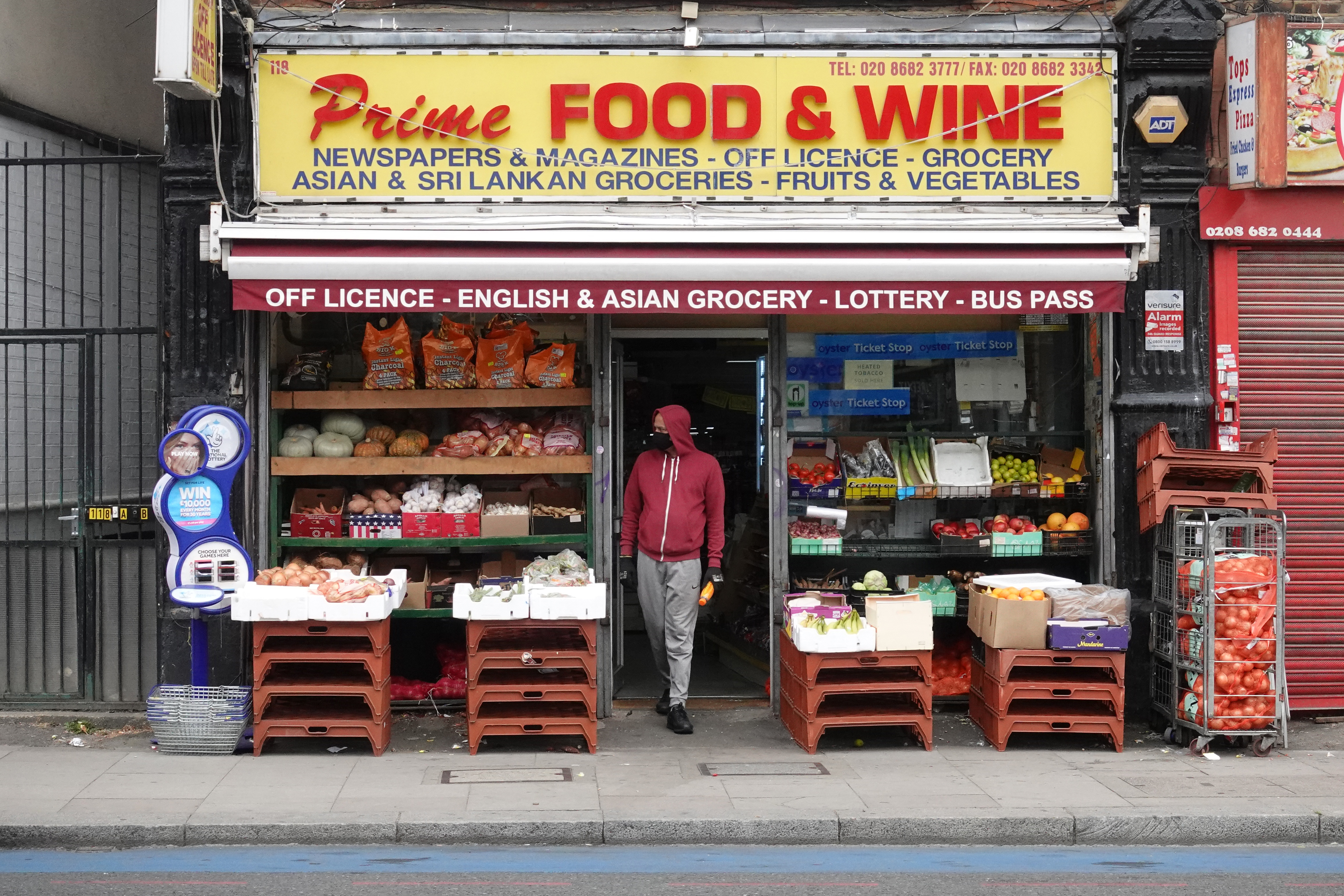
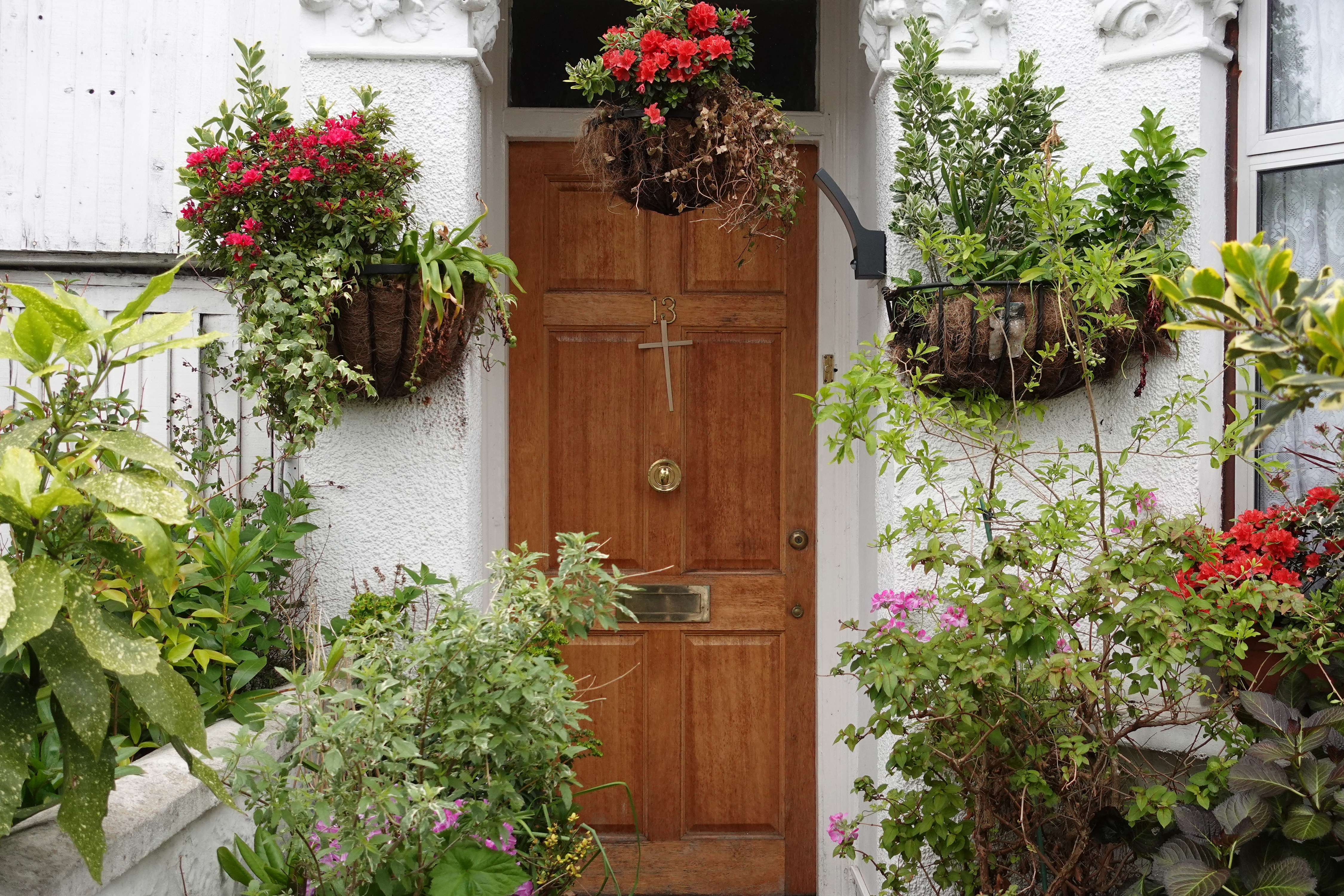
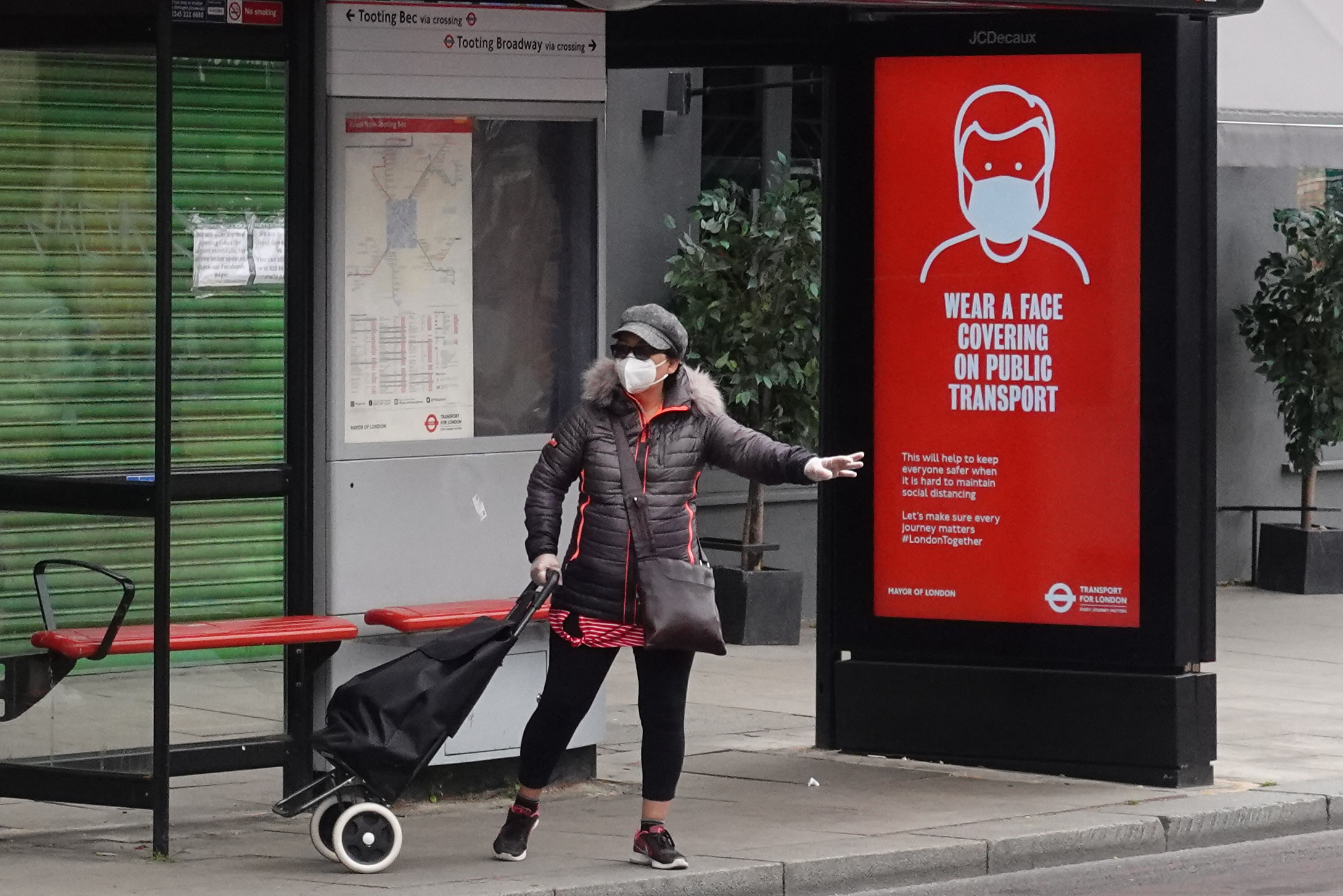
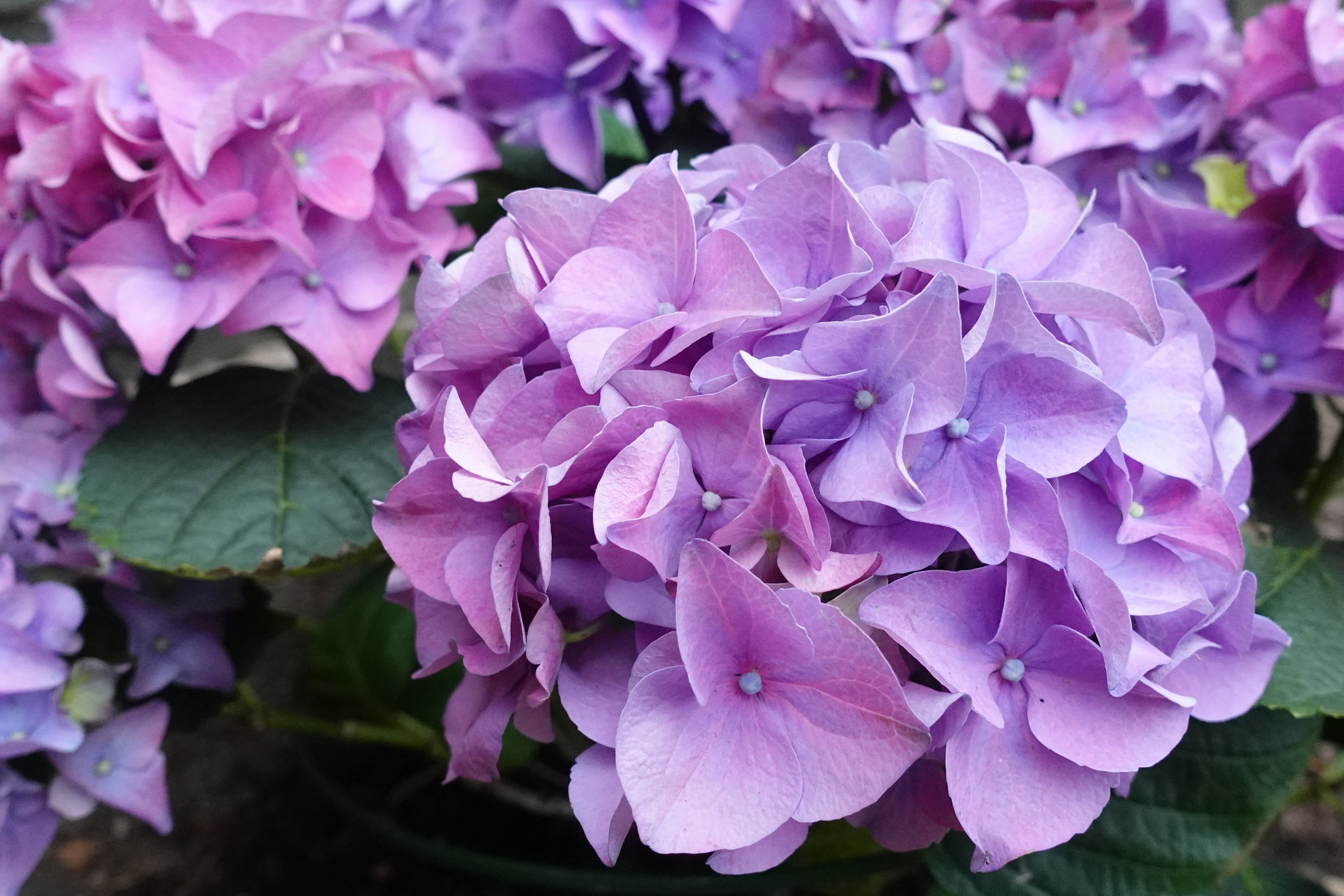
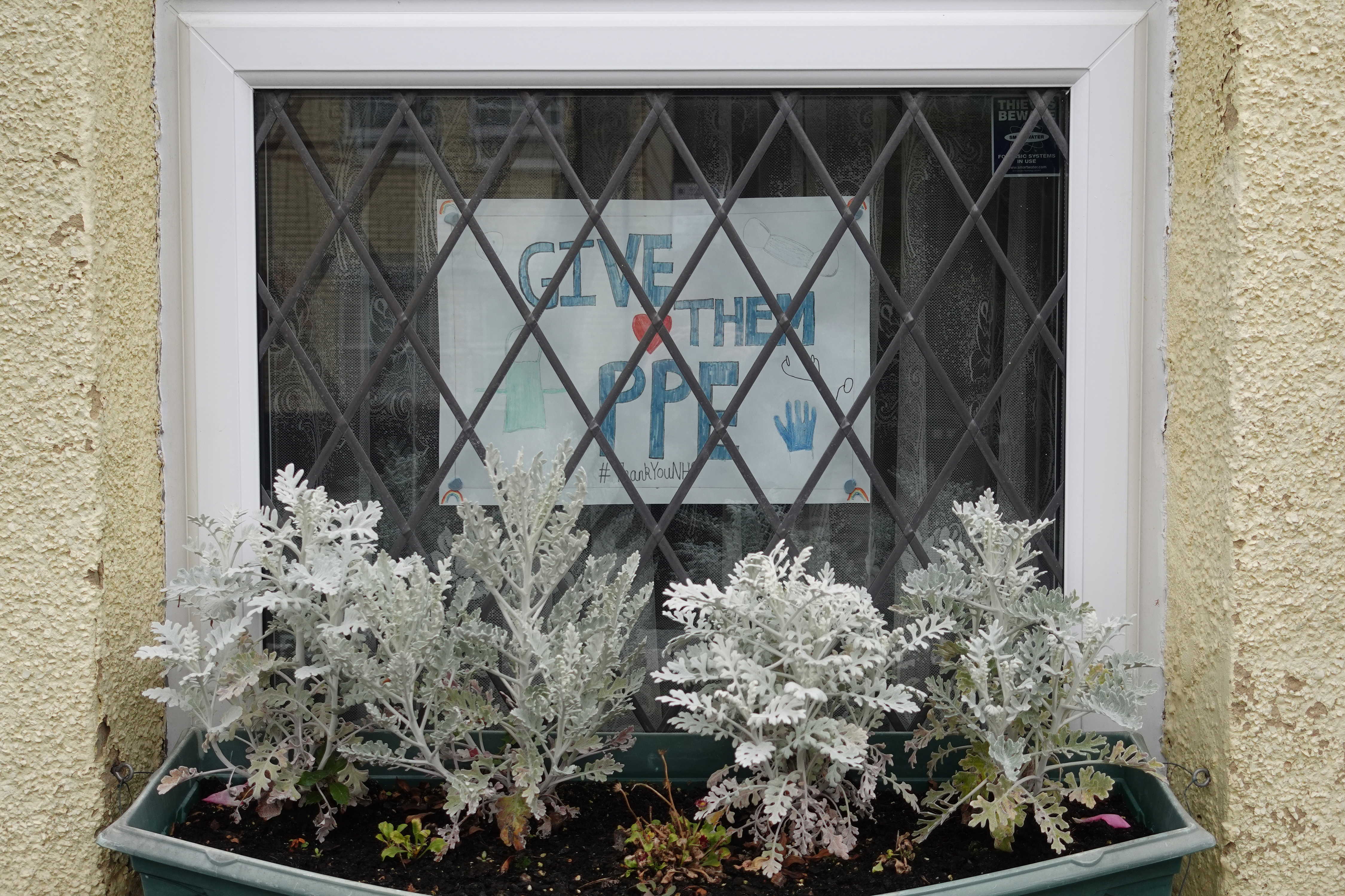


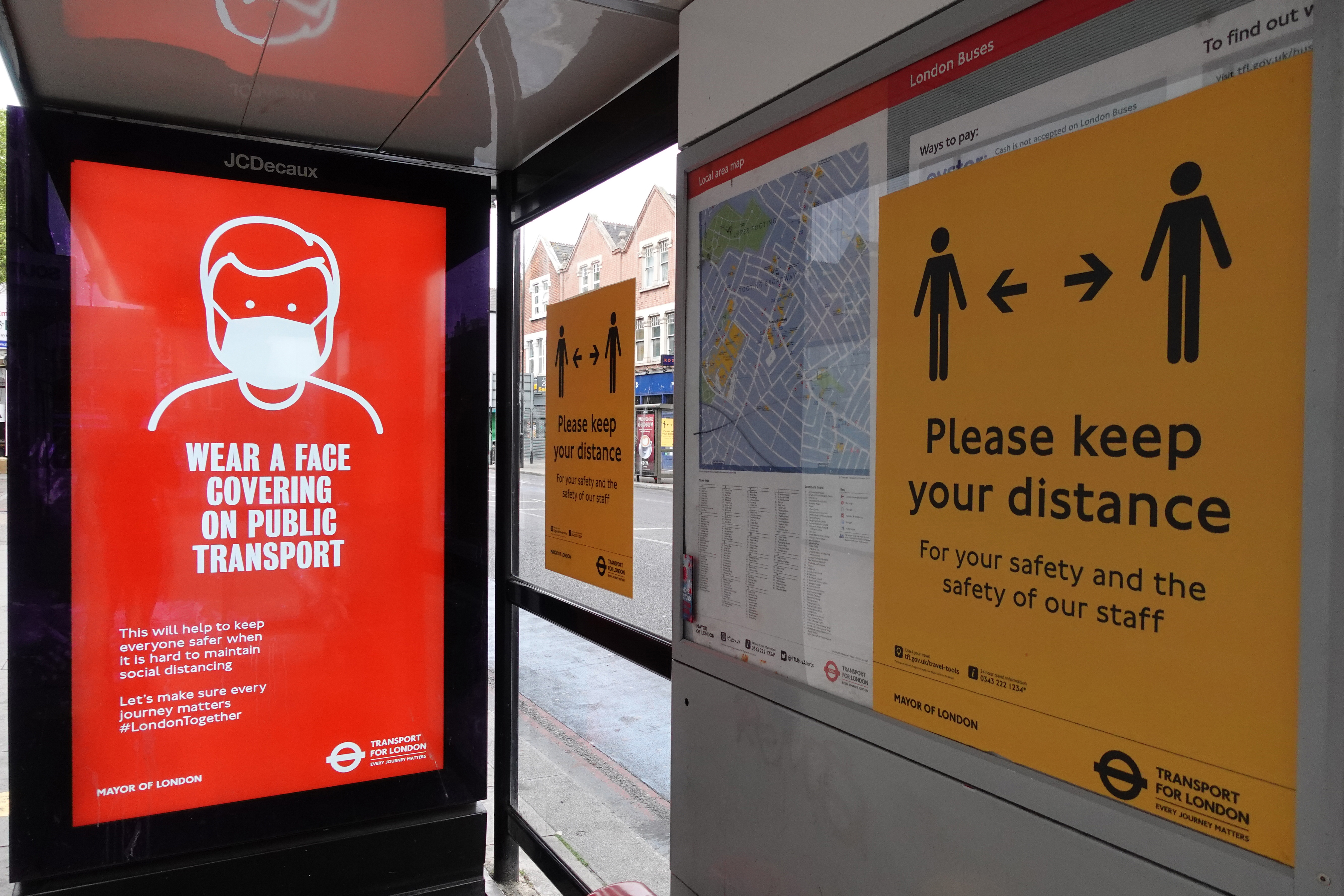
Of course, despite its vlogging focus, the ZV-1 is also a pretty capable stills camera. The lack of a viewfinder or lens control ring means it's no match for its more stills-focused RX100 stablemates here, but the quality is certainly still there if you want to shoot some Instagram-worthy stills to complement your YouTube videos.
There's bags of detail in images, and you can bring back even more from highlights and shadow areas if you shoot in raw. Noise is well controlled too up to ISO 800, with image quality only really going south from ISO 6400 and above.
Of course, it's arguable that today's smartphones are at least a match for the ZV-1 when it comes to stills photography, thanks to their computational smarts. But the ZV-1's bright lens and high-speed shooting modes still make it a handy backup tool for shooting portraits and action scenes, even if you really should be looking elsewhere for a dedicated stills camera.
Should I buy the Sony ZV-1?

Buy it if...
You want a powerful vlogging camera that fits in your pocket
The Sony ZV-1 is the best compact camera so far for YouTubers. It shoots smartphone-beating 4K video, while also easily slipping into your pocket, making it ideal for those who like to shoot their travel adventures. Larger cameras like the Olympus OM-D E-M5 Mark III are even more powerful, but the ZV-1 is the best in its weight class.
You want the best autofocus system around
The Sony ZV-1's main benefit over smartphones is the combination of its bright lens and class-leading autofocus system, which together are a great combo for vlogging or filming anything at close quarters. Until smartphone makers learn how to properly master video bokeh, this is the best pocket camera for that style of filming.
You want a small video camera that can grow with you
While Sony has attempted to make the ZV-1 simpler for beginners to use – and the slick autofocus goes some way to achieving that – it's also jam-packed professional features. This is no simple point-and-shoot, so if you want a camera that lets you endlessly tweak settings or level up to color grading, the ZV-1 will let you do that.
Don't buy it if...
You need an all-weather action camera
The ZV-1 is packed with features, but one that it lacks is weather-proofing. Despite the new screen's handy ability to fold towards the body to keep it protected, the ZV-1 is a bit of a fragile soul. So if you want something for filming action sports, or want to take your camera out in monsoon season, the GoPro Hero 8 Black is a better choice.
Your main priority is ultra-smooth footage
The ZV-1's Active SteadyShot stabilization mode is useful, but isn't the absolute best around. If your main priority is ultra-smooth video over outright image quality, check out the DJI Osmo Pocket: it's also pocketable, but has a three-axis gimbal that's great for walking videos. If you don't mind a larger camera, the Olympus E-M5 Mark III also offers superior stabilization to the ZV-1.
You mainly want to shoot stills with a side of video
While it's no slouch when it comes to shooting photos, the ZV-1's lack of a viewfinder and moderate zoom range mean its advantages over the latest smartphones are slim when it comes to stills. If you want a compact camera that will really take your snaps to the next level, check out something like the excellent Fujifilm X100V.
First reviewed: May 2020

Mark is TechRadar's Senior news editor. Having worked in tech journalism for a ludicrous 17 years, Mark is now attempting to break the world record for the number of camera bags hoarded by one person. He was previously Cameras Editor at both TechRadar and Trusted Reviews, Acting editor on Stuff.tv, as well as Features editor and Reviews editor on Stuff magazine. As a freelancer, he's contributed to titles including The Sunday Times, FourFourTwo and Arena. And in a former life, he also won The Daily Telegraph's Young Sportswriter of the Year. But that was before he discovered the strange joys of getting up at 4am for a photo shoot in London's Square Mile.
